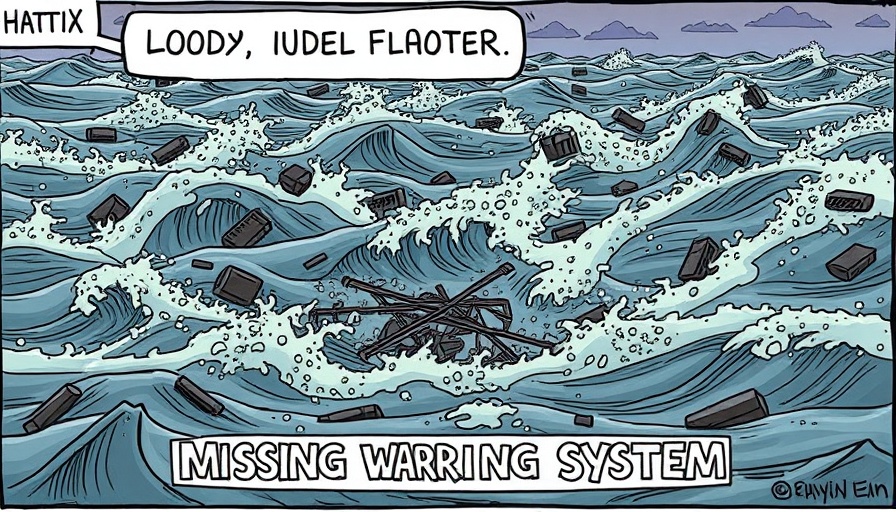
Understanding the Impact of Recent Floods in Texas
In the wake of recent devastating floods in the Texas Hill Country, communities are grappling with the tragedy of those tragically missing. The relentless rain that swept through this region not only caused significant property damage but also led to life-threatening situations for many residents. Emergency services have worked tirelessly to search for individuals, but the uncertainty surrounding the missing has cast a shadow over the affected communities.
A Call for Action: Community Support
These events highlight the importance of community support during crises. The outpouring of help from neighbors, local organizations, and volunteers has been essential in recovery efforts. Initiatives for food drives, shelter provisions, and emotional support have emerged, demonstrating the resilience of Texan spirit. It's crucial for citizens to centralize their efforts, gathering resources to assist those who have lost everything.
Natural Disasters and Climate Change: A Growing Concern
This flooding episode raises pressing questions about climate change and its impact on Texas’s weather patterns. Experts have noted an alarming increase in the frequency and intensity of storms due to changing climate conditions. Understanding these factors can help local governments devise strategies to bolster infrastructure and community preparedness, paving the way for better resilience against future disasters.
Lessons Learned: What Can Be Improved
Following the floods, there is a critical need to evaluate response mechanisms. A strong emergency management system can be the gateway to saving lives. Investments in better weather forecasting technology, early warning systems, and efficient evacuation protocols are vital for future disaster preparedness. Engaging community members in disaster response training can also empower locals to take action during emergencies.
What Lies Ahead: Future Predictions and Community Resilience
As we look forward, it’s essential to incorporate lessons from this disaster into town planning and environmental policies. Predictions indicate that without significant changes to our response and prevention strategies, communities in Texas may face even greater challenges in the years ahead. Collaboration between government agencies and citizens will be pivotal in shaping resilient futures that protect lives and property.
The Emotional Toll and Human Impact of Natural Disasters
The human impact of flooding is profound, often reaching beyond physical loss. Survivors may face emotional trauma, displacement, and grief for lost loved ones. Mental health services should be prioritized in post-disaster recovery plans to aid those affected in navigating their emotional journeys. Providing a safe space for sharing experiences can foster healing for community members.
As communities rally together in the wake of these challenges, the spirit of resilience shines through. Understanding the intricacies of disaster response, support systems, and future preparations is crucial. To truly tackle the devastation caused by floods, a united approach is necessary, with community engagement at its core. This moment calls for reflection, advocacy, and most importantly, action in safeguarding Texas against future natural disasters.
 Add Row
Add Row  Add
Add 




Write A Comment